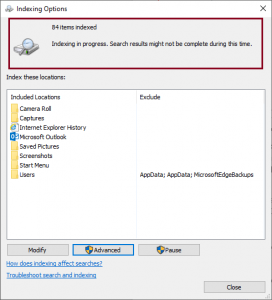
So, what is the big news, and how it solves the issues we reviewed earlier? More information about Big Funnel can be found at the next link from Microsoft Ignite BRK3130: It uses a new architecture based on the Big Funnel search engine, based on Bing technology which is already in use by Exchange Online as part of Office 365 in the cloud.
Moving mailboxes will cause not only reindexing the target database copy but also all other copies of the same database.Įxchange 2019 utilizes a new and different way of indexing. This might be critical where mailboxes are having a very high number of items. Moving mailboxes between databases will cause reindexing the mailboxes again at the target databases and removing the moved mailbox indexing from the source database. Rebuilding the whole catalog indexing requires an intensive I/O and CPU resources from the server. During the indexing rebuilding, eDiscovery and the Search-Mailbox activities also will not get any results, related to mailboxes located on the database where the catalog is getting fixed. Rebuilding a failed search index might take a long time, in case users are working in Outlook Online mode or OWA, they will not be able to get any results in case of search queries. There are few cases where this “catalog folder” architecture might affect users experience and servers load: This change also reduces database failover times when compared to Exchange Server 2013.” Problem Statement Lagged database copies still coordinate with their active counterparts to perform index updates. As a result of this change, passive HA copy search instances no longer need to coordinate with their active counterparts to perform index updates. The local search instance reads data from a database copy on the local server, also known as “Read from Passive”. The Exchange Server Role Requirements Calculator has been updated to reflect these improvements. MS OUTLOOK REBUILD INDEX UPDATE
In Exchange Server 2016 Cumulative Update 3, network bandwidth requirements between the active copy and passive HA copies are reduced. One of the challenging areas in some on-premises environment is the amount of data replicated with each database copy.

Since Exchange 2016 CU3, the passive copy was able to rebuild its indexing from the local database itself, which saved a lot of bandwidth: This action took relatively a lot of networking bandwidth and it was especially critical between different geographical sites like production and DR sites. By the way, until Exchange 2016 CU3, in case of a failure with indexing at the passive copy, Exchange had to reseed the indexing from the active copy only.





 0 kommentar(er)
0 kommentar(er)
